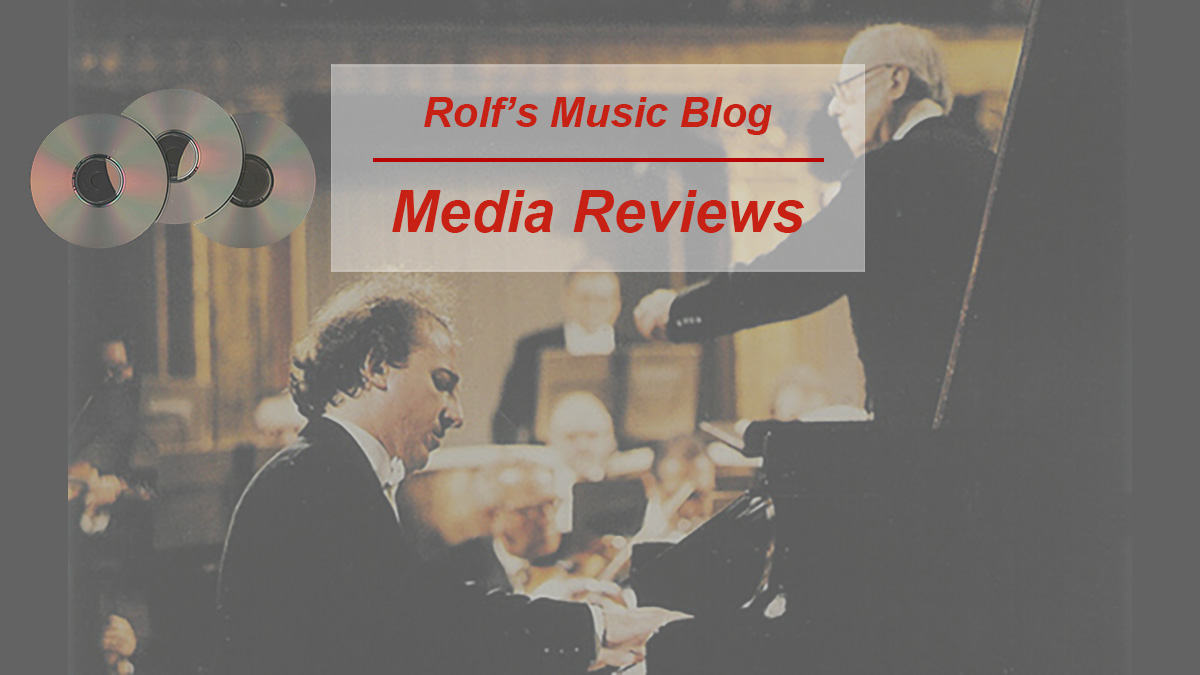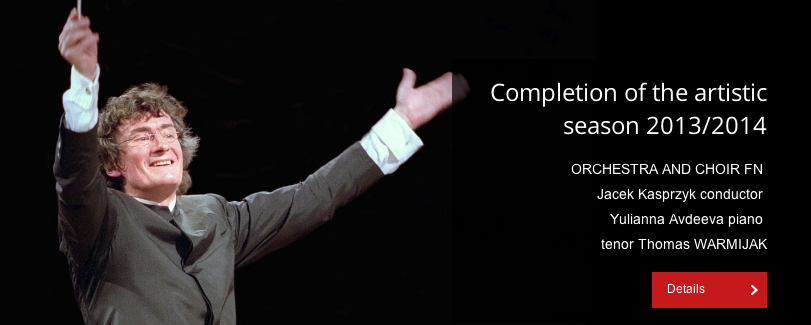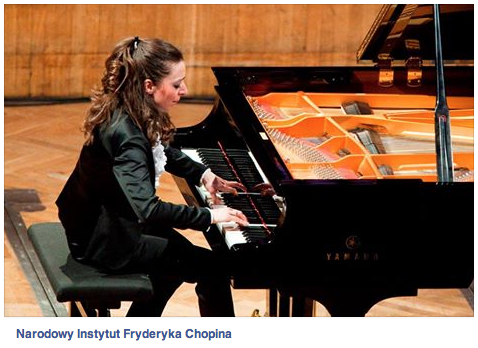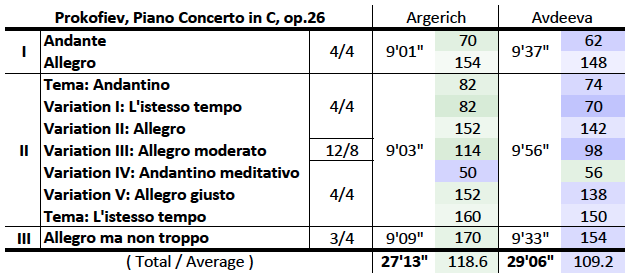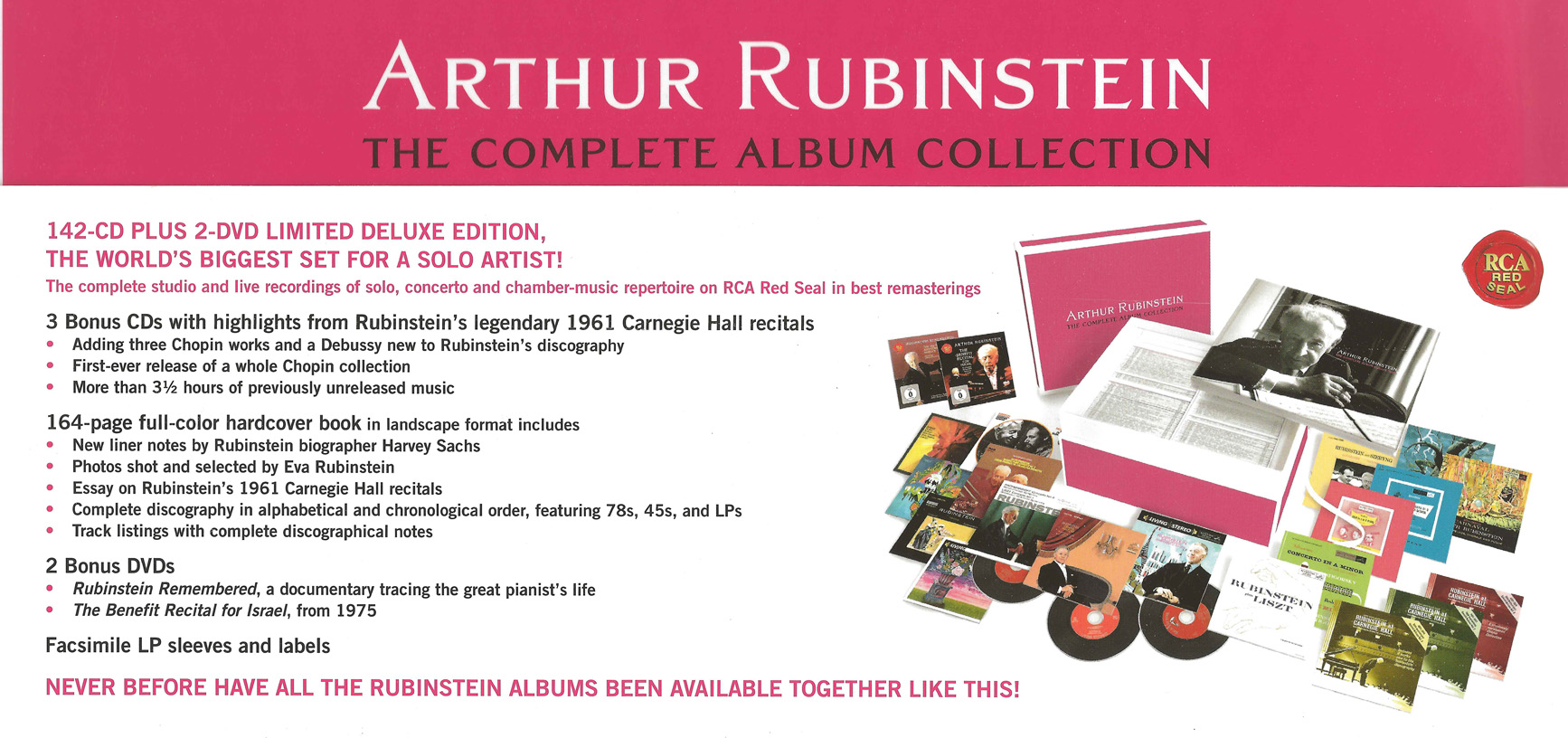A Concert with Yulianna Avdeeva
Live Webcast from Warsaw, 2014-05-30
2014-05-30 — Original posting (on Blogger)
2014-11-12 — Re-posting as is (WordPress)
2015-09-06 — Removed obsolete YouTube link
2016-07-21 — Brushed up for better readability
Table of Contents
Program
On 2014-05-30, the final concert from the season 2013/2014 in the Warsaw Philharmonic Hall was broadcast online. The concert featured Yulianna Avdeeva, the National Philharmonic Orchestra and Choir under the direction of Jacek Kasprzyk, and the tenor Thomas Warmijak. The program for the concert included
- Modest Mussorgsky (1839 – 1881): “Night on Bald Mountain“ (a.k.a. “St.John’s Night on Bald Mountain”)
- Sergei Prokofiev (1891 – 1953): Piano Concerto No.3 in C, op.26
- Encore: Frédéric Chopin (1810 – 1849): Mazurka in B minor, op.33/4
- Karol Szymanowski (1882 – 1937): Ballet “Harnasie”, op.55
General Remarks
Judging from the applause, the last composition, a ballet music with tenor and choir, was the principal work in this concert. It features popular, folklorist themes from the Tatra mountains, is easy to “understand” (even without the action). In fact it’s very nice music. The audience obviously liked it! The first composition in the concert was Mussorgsky’s “Night on Bald Mountain”, in Mussorgsky’s original version, reconstructed only in 1968. This opened the concert after a lengthy ceremony where awards were given to various people. As I don’t understand Polish, I have no idea who the people were, and what they were awarded for. Mussorgsky’s work is a composition with menacing, dark tones.
It must have been due to the award ceremony that the piano was brought onto the stage after the Mussorgsky only. This caused an almost 10 minute break in the concert. That was somewhat disruptive: definitely not ideal. However, I’m sure Yulianna Avdeeva’s playing was not affected by this extra intermission. But it must have caused unnecessary distraction in the audience, possibly also with the orchestra.
Sergei Prokofiev (1891 – 1953): Piano Concerto No.3 in C, op.26
In the text below, I’m going to focus on the part featuring Yulianna Avdeeva. I can’t talk for people in the audience, but speaking for myself: I instantly forgot about the award ceremony, the Mussorgsky and the subsequent disruption due to the rearrangements on the podium. I’ll keep my comments short, as this was essentially a “one-pass listen”. However, I did do a sketchy comparison with the one recording that I have in my collection so far:
Reference Recording? Martha Argerich / Claudio Abbado
Prokofiev: Piano Concerto No.3 — Ravel: Piano Concerto in G; Gaspard de la nuit
Martha Argerich, Claudio Abbado, Berliner Philharmoniker
DG 447 438-2 (CD, stereo); ℗ 1967/1975 / © 1995
Booklet: 7 pp. (English)

Argerich’s Debut Recording
The Prokofiev concerto (as well as Ravel’s Concerto in G) are from Martha Argerich’s debut recording, made in 1967, two years after she won the first prize in the Warsaw Chopin competition in 1965. To me, this was the reference recording for Prokofiev’s Piano Concerto No.3, so far! The coarse structure of this concerto can be seen in the table below. There are three movements:
- Andante — Allegro
- Andantino (theme with 5 variations)
- Allegro ma non troppo
A Short Comparison, with a Table
In the table below, I have tried estimating the metronome numbers for the two interpretations in this quick comparison (rates for 3/8 for variation III in the second movement, for 1/4 elsewhere); the metronome rates and the time signatures are those at the beginning of the respective section. The colors in the metronome columns indicate slower (blue) vs. faster tempi (green):
With exception of variation IV (Andante meditativo) in the second movement, Martha Argerich prefers faster tempi. Her interpretation (as other recordings that she did around that time) focuses on virtuosity and speed. She is taking this concerto as an opportunity to show off her technical brilliance, her stupendous pianistic abilities. For all I can say, it is an excellent recording. The sound quality may not be comparable to recent recordings, though.
Yulianna Avdeeva’s Interpretation
I. Andante — Allegro
As shown in the table above, Yulianna Avdeeva prefers slightly more moderate tempi. However, upon listening, the tempo difference is hardly noticeable. This has to do with articulation and agogics / rubato. Yulianna Avdeeva’s playing is wonderfully clear, detailed, transparent. This was immediately obvious especially in the first movement. She plays this (almost) as clearly and with light, detailed articulation as others play sonatas by Domenico Scarlatti. Never in this movement one has the feeling of virtuosity for its own sake. The movement is playful, virtuosity is merely a necessary means for expressing this music. Also, it was a joy to watch how she constantly interacted with the orchestra. She leaned towards the other musicians, kept eye contact with the conductor, seemingly playing her complicated score without even watching the keyboard. Superb, for sure! Direction and orchestra were excellent, in general.
II. Andantino
The second movement (by no means is a harmless Andantino, as the first annotation may suggest) isn’t just a virtuoso piece as with Martha Argerich. Yulianna Avdeeva gives each variation its specific face. For example, variation I sounds ironic, variation II is virtuosic. Here is where I noted the one instance with some minor coordination issues in the orchestra, after the change to the Allegro. In variation III, Yulianna Avdeeva exposes the grotesque aspects by “leaning into” the many syncopes. Variation IV is an intense dialog with the orchestra. In variation V, Argerich and Abbado accelerate considerably, more than just noticeably after the annotation energico. With Yulianna Avdeeva, there is some acceleration, too, but very subtle, hardly noticeable.
III. Allegro ma non troppo
Yulianna Avdeeva never pushes the tempo. In the last movement, Martha Argerich sometimes pushes the tempo to a point where the orchestra starts to have (slight) coordination issues. Overall, one could summarize that Martha Argerich forms each movement in big phrases. Yulianna Avdeeva on the other hand puts the focus on “local expression”, with detailed articulation and agogics. She does not try to dominate, or to impress with technical skills. Her playing is absolutely superb. One can really feel how she enjoys playing this music!
One principal difference between the two recordings seems to me that the Argerich recording puts the pianist into the center. The soloist dominates the entire concerto, the orchestra is the accompaniment. I perceive Yulianna Avdeeva more as partner to the orchestra. There are sections where the orchestra is allowed to take the lead. Here, the soloist subordinated to the orchestra, despite the extremely virtuosic solo part!
General Remarks
One should keep in mind, that the recording with Martha Argerich & Claudio Abbado was made in a studio, whereas this concert with Yulianna Avdeeva was a live broadcast, which makes her performance even more remarkable! That came with some inevitable side-effects, such as rare noise from the audience. Also, somewhat unfortunately, there was applause into the last chord with every movement. It’s a pity that the audience was not asked to wait for the end of the concerto before applauding!
There was also a minor irritation with the visual recording: there was one camera probably mounted on the balcony, giving the “audience view”; here, Yulianna Avdeeva was seen in a black concert suit. Then, there were additional cameras. One was for the conductor, and one in the orchestra, very close to the soloist. That latter camera was either broken or mis-adjusted, as it showed soloist in a rather bright, purple/violet suit (!). When she leaned towards the orchestra, she sometimes appeared in danger of touching the camera!
There was a long applause after the Prokofiev concerto. So, Yulianna Avdeeva decided to play an encore:
Encore — Frédéric Chopin (1810 – 1849): Mazurka in B minor, op.33/4
This is the same encore as what Yulianna Avdeeva played already at Marijnsky Concert Hall in Saint Petersburg earlier this year. This was available on YouTube, but the video has since been removed. The overall timing is the same almost down to the second (4’22” in Saint Petersburg, 4’25” in Warsaw). This indicates that Yulianna Avdeeva’s interpretation is “settled”. She isn’t experimenting on this any longer. Yet, I felt that the Warsaw performance was a tad more fluent, more harmonic, more organic, but still with a little more freedom in the rubato. In her hands, this becomes a very intimate, emotional piece, wonderfully balanced, yet with rhythmic tension in every bar — excellent!
I took the chance of making a brief comparison with three other recordings of this piece that I have on CD, all played by Arthur Rubinstein, who made three complete recordings of Chopin’s Mazurkas:
Arthur Rubinstein Collection, CDs #6 – 10
Arthur Rubinstein — The Complete Album Collection
CDs #6 – 10: The Early Recordings 1931 – 1939
Arthur Rubinstein
SONY Classical 88691936912 (142 CDs / 2 DVDs, mono / stereo); ℗ / © 2011
Documentation 162 pp., track listing on CD sleeve

Arthur Rubinstein Collection, CDs #42 – 44
Arthur Rubinstein — The Complete Album Collection
CDs #42 – 44: Chopin — The Complete Mazurkas
Arthur Rubinstein
SONY Classical 88691936912 (142 CDs / 2 DVDs, mono / stereo); ℗ / © 2011
Documentation 162 pp., no text on CD sleeve

Arthur Rubinstein Collection, CDs #96 – 98
Arthur Rubinstein — The Complete Album Collection
CDs #96 – 98: Chopin — The Mazurkas
Arthur Rubinstein
SONY Classical 88691936912 (142 CDs / 2 DVDs, mono / stereo); ℗ / © 2011
Documentation 162 pp., no text on CD sleeve

Timing
Even just looking at the timing is interesting:
- The first time Arthur Rubinstein recorded this was in 1938, when the artist was 51. Duration: 4’29”.
- The second one Rubinstein made in 1952, at the age of 65. Duration: 4’35”.
- The last one was made in 1966, when Rubinstein was 79. Duration: 5’35”.
Yulianna Avdeeva appears to be faster than even the early Rubinstein recordings. But that picture is misleading. Rubinstein plays a version with 24 extra bars after bar #90 (224 bars overall, in lieu of just 200). One can extrapolate that with these extra bars Yulianna Avdeeva’s interpretation would take approximately 4’55”. Apart from the overall timing, how do these versions compare?
Performance Comparison
Many people would take Rubinstein’s interpretations as reference recording. Yet:
- In 1938, Rubinstein’s interpretation sounds like a melancholic waltz / dance, with rhythmic “waltz tension” in every bar. I notice this a bit less in the f parts. In comparison to Yulianna Avdeeva’s interpretation, these seem almost boisterous.
- Rubinstein’s recording from 1952 is of course still mono. It is very similar to his first one (still for 78 r.p.m. shellac discs), but cleaner, more careful.
- In 1966, Rubinstein’s interpretation has changed considerably. It became not only slower, but also more hesitant, more pensive. There is more clarity in the f parts, which also aren’t outbursts as much as in the older versions. Interestingly, just here, Rubinstein sticks to the score for the ending. He leaves the final chords p, making the piece end in silence, in a thoughtful mood.
- Yulianna Avdeeva doesn’t limit this piece to a melancholic folk dance. She adds an entire new dimension in terms of emotionality, intimacy in the melancholic sections. While her f parts aren’t anything less than boisterous outbursts: instead, she adds intensity, even more emotion. Everything has this “talking” rubato, is never mechanic or “just dance”. It’s excellent, overall: I prefer this over any of Rubinstein’s interpretations! In terms of base tempo, Yulianna Avdeeva is closer to Rubinstein’s early recordings. The extra time she takes is not from the base tempo, but from the rubato.
I haven’t checked the sources, so I don’t know what the dynamic annotation is for the final bars. Yulianna Avdeeva plays the last chords f, as Rubinstein did in this older recordings. I also don’t know about the situation with the 24 bars that Yulianna Avdeeva does not play. However, I’m sure she has carefully checked the available sources / original scores.
Addendum
Other postings on Yulianna Avdeeva in my blog:
- 2011-10-08: Encounters with Yulianna Avdeeva
- 2011-10-09: Yulianna Avdeeva in Warsaw 2010
- 2011-10-09: Yulianna Avdeeva in Zurich, 2011-09-26
- 2013-12-19: Observations on Yulianna Avdeeva’s Playing
- 2014-03-22: Yulianna Avdeeva in Baden/CH on 2014-03-08

